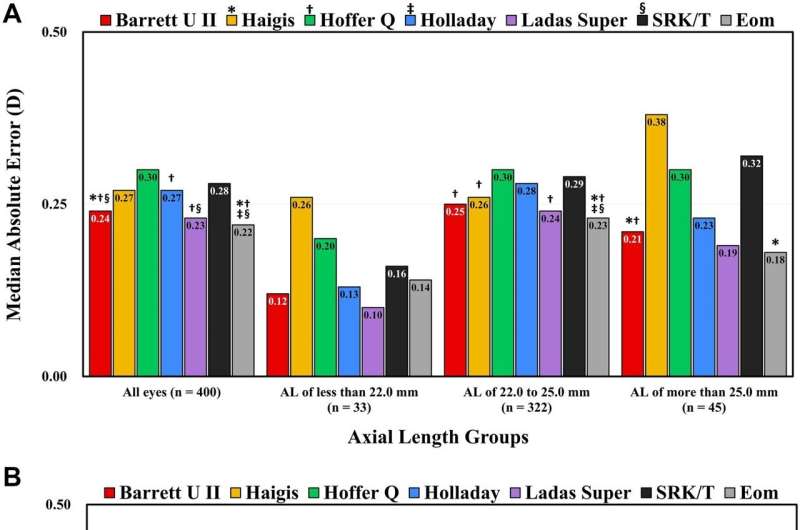This article has been reviewed according to Science X's editorial process and policies. Editors have highlighted the following attributes while ensuring the content's credibility:
fact-checked
peer-reviewed publication
proofread
Researcher develops Korea's first modified intraocular lens power selection method

A new modified intraocular lens (IOL) power selection method was developed, which has more accurate power calculation than the existing method. Dr. Youngsub Eom of Department of Ophthalmology of Korea University's Ansan Hospital developed a modified IOL power selection method for the first time in Korea.
The findings are published in the journal Scientific Reports.
Cataracts are a disease of the clouding of the lens of the eye, making your vision foggy. It is treated surgically by removing the contents of the clouded lens and inserting IOL. Before cataract surgery is performed, biometric tests are conducted on corneal curvature, anterior chamber depth, axial length, etc. Then, the test values are applied to the IOL power formula to calculate the power of IOL to be inserted.
The Eom IOL power calculator, after Dr. Eom's last name, extracts the result values by dividing reading results into 768 biometric subgroups and applies different calculation methods to each subgroup. As the number of subgroups is expanded to 768 from the existing 448, it is now possible to calculate the power of IOL in most eyes.
To develop the calculation formula, the research team utilized 1,200 cases out of 1,600 eyes of 1,600 patients as reference data who underwent cataract surgery at Korea University's Ansan Hospital. The team used data of the rest of 400 eyes to compare their formula to the existing 6 formulas (Barrett Universal II, Haigis, Hoffer Q, Holladay 1, Ladas Super, SRK/T) in terms of accuracy.
The result showed that the Eom IOL power calculator has the most excellent accuracy, even better than Barrett Universal II, a formula known to be the most accurate among the existing formulas.
Dr. Eom said, "it is meaningful that domestic researchers developed and announced a new modified IOL power selection method." Further adding, " In particular, Eom IOL power calculator was developed as an online calculator for enhanced user convenience. You can use it on not only desktop computers but also smartphones."
On the other hand, the research team is currently developing another new IOL power calculator that can be used for keratorefractive surgeries such as LASIK and LASEK.
More information: Youngsub Eom et al, Modified intraocular lens power selection method according to biometric subgroups Eom IOL power calculator, Scientific Reports (2024). DOI: 10.1038/s41598-024-54346-9





















